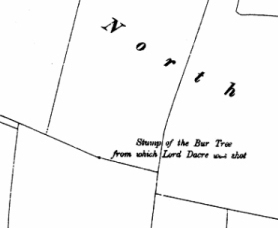
Stump of Bur Tree
“This Lord Dacres, as the report goeth, was slayne by a boy, at Towton Field, which boy shot him out of a burtree, when he had unclasped his helmet to drink a cup of wyne, in revenge of his father, whom the said lord had slayne before, which tree hath beene remarkable ever since by the inhabitants, and decayed within this few yeares. The place where he was slayne is called the North Acres, whereupon they have this ryme. The Lord Dacres Was slayne in the North Acres” Glover 1585
Glover might not even have seen this tree as he states that it was, apparently, already dead. The former location of this tree has been noted ever since, … but why?
The stories of the deaths of Lord Dacre and Lord Clifford at Towton are almost interchangeable :
- Both removed their helmets and gorgets to drink.
- Both were killed by an arrow to the throat.
- Dacre was killed in Towton Dale. Clifford was killed in Dintingdale – separated by only a few hundred metres.
- Neither were taken away from the battlefield – both were buried close by.
- Dacre was allegedly buried at Saxton (which lies in the same valley as Dintingdale) and Clifford was allegedly buried in an unknown grave
But where ?
If Lord Dacre is buried in Saxton near Dintingdale, then where is Lord Clifford buried ?
“The body of ‘Black-faced’ John, 9th Lord Clifford was buried in a pit with some fellow soldiers killed on the battlefield.” Clifford, H. 1987 The House of Clifford
Is he, therefore, in North Acres ?
The 1908 OS map of Towton Dale indicates the location of the “Stump of the Bur Tree from which Lord Dacre was shot”.
‘…and the people of this kingdom in a plentiful multitude were taken away from human affairs [killed]; and their bodies were notoriously left on the field, aforesaid, and in other places nearby, thoroughly outside the ecclesiastical burial-place, in three hollows. Whereupon we, on account of affection, contriving the burial of the deceased men of this sort, caused the bones of these same men to be exhumed and to be left for an ecclesiastical burial in these coming months, partly in the parish church of Saxton in our said county of York and in the cemetery of the said place, and partly in the chapel of Towton, aforesaid, and the surroundings of this very place.’ RICHARD III, 1484 Grant for the recovery of human remains

Non-ferrous and ferrous artefacts
It is clear, when we look at the location of non-ferrous and ferrous artefacts, that the Burr Tree ‘saw’ a lot of action.
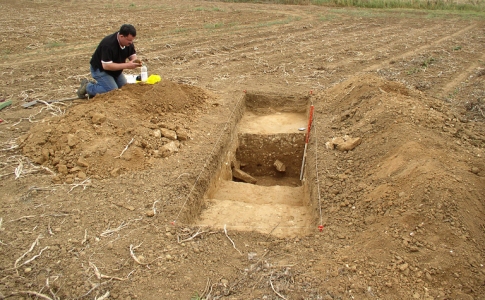
Initial surveys in this area had already found a human ulna and teeth and so a test trench was dug.

Plan and section through test trench
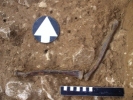
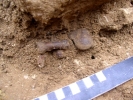
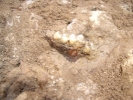
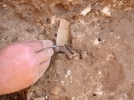


- The remaining bones left behind following the emptying of the graves were all small and may have been discarded or missed by the grave diggers.
- Few bones were articulated – skeletons were only partly skeletonised when they were excavated in 1483.
- Over 300 bone fragments represented individuals aged between 15 to mature adults.
- Degenerative joint disease, a fracture, muscular trauma and stress lesions on the teeth. There were also two cranial injuries
Does “Lord Dacre’s Tree” mark the former location of a memorial?